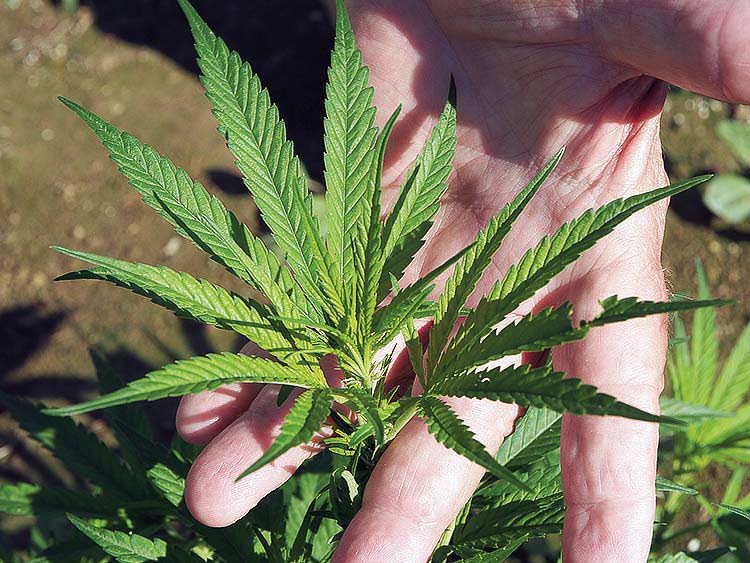Marijuana: a neurological perspective

DR AZAD ESACK
MARIJUANA (weed, ganja, pot) is obtained mainly from the plant cannabis sativa.
There have been at least 400 different chemical substances identified from the plant, but the ones of greatest interest are called the cannabinoids, namely THC (tetrahydrocannabinol) and CBD (cannabidiol).
THC, acting on certain receptors in the brain, produces the well-known psychoactive “high,” whereas CBD is thought to dampen down this response and may also exert a positive effect on the immune system.
The percentage of THC and CBD present in non-specially cultivated cannabis sativa is between 12 to 16 per cent each. The greater the amount of THC present, the more potent the psychoactive effect and, conversely, more of the CBD results in a lesser psychoactive effect.
When smoked, the drug acts within minutes and peaks in about one hour. If eaten, the onset of action is longer – about two hours – and the effects of the drug may last for as long as ten hours, a worrying thought when you contemplate that many users go on to drive on our roadways after using the drug.
Unfortunately, and by virtue of the fact that marijuana acts via receptors distributed in several parts of the brain, there are serious unwanted side-effects. These include acute anxiety (the commonest, particularly in new users), acute psychosis, hallucinations, delusions, depression, seizures, nausea and vomiting.
All of these can be seen on a regular basis in patients attending emergency medical departments, and even more so in cities like Denver in the US ever since cannabis usage was legalised in the state of Colorado in 2014.
Chronic usage is well known to be associated with atrophy (shrinking) of certain parts of the brain. This not uncommonly leads to a slowing down of movement, thought processes and higher mental functioning with memory loss, lack of motivation, mood disorders, seizures and a schizophrenic form of illness.
Young users, especially teenagers, are at particular risk because the drug has a significant effect on the still developing brain. A recent study conducted in New Zealand has shown a reduction in the IQ of teenagers smoking marijuana when they get to adulthood.
Now on to medicinal marijuana. CBD has been touted as a panacea for a vast number of neurological illnesses including epilepsy, multiple sclerosis, pain syndromes, Parkinson’s disease and other movement disorders. You begin to think twice when one drug can be used to treat so many different ailments. Most of the CBD comes from hemp, a specially grown strain of cannabis sativa with high levels of CBD.
The fact is CBD has only been shown to be effective in two genetically determined forms of epilepsy called Lennox-Gastaut and Dravet’s syndromes. This is welcome news for patients with these two forms of severe epilepsy.
That said, and examining the study, one cannot totally disregard that there were 50 deaths in the treated (CBD) group compared to no deaths in the placebo group, with many of the deaths coming on soon after starting CBD.
Additionally, the drug was not without side-effects which included reduced appetite, diarrhoea, fatigue, infections, insomnia, rash, sedation and, last but not least, a worrisome elevation of liver enzymes indicative of liver structural changes.
Further, it must be pointed out that the preparation used in the study was a drug called Epidiolex which contained no less than 98 per cent CBD.
This brings us to the next point. Seven out of ten so-called CBD oil preparations sold in shops or obtained online contain significantly less CBD than shown on the label. In addition, many actually had relatively high levels of THC, thus defeating the value of the CBD.
So, returning to epilepsy and CBD. The drug has not been shown to be effective for all forms of epilepsy. Combinations of CBD and THC preparations may make the epilepsy worse.
A case in point: a young boy was recently admitted to hospital with severe epilepsy. It took many weeks to stabilise his seizures and he was eventually discharged, only to promptly return to hospital after a parent took it upon himself/herself to start the boy on CBD oil obtained locally. Quite possibly the CBD oil contained THC as well.
I can also report that one in four young men coming to our epilepsy clinic with new onset seizures smoke marijuana on a regular basis. I can also state that about three young men with no vascular risk factors were admitted to hospital over the last year with stroke whilst smoking marijuana. Chance occurrences? Probably not.
The problem with CBD is that there are insufficient well-designed large studies comparing the drug to standard medication both in terms of effectiveness and side-effect profile. There are too many anecdotal and emotive reports of CBD working here or there. I hasten to add that CBD is not an inexpensive product.
We must not be guilty of throwing the baby out with the bath water though. We hope that in the coming months to years the effectiveness or ineffectiveness of CBD would be proven. Right now we must err on the side of caution, more so since we have limited access to pure CBD preparations locally and there are no official guidelines for its use, including the paediatric population as well as in pregnant patients.
Dr Azad Esack is a consultant neurologist


Comments
"Marijuana: a neurological perspective"